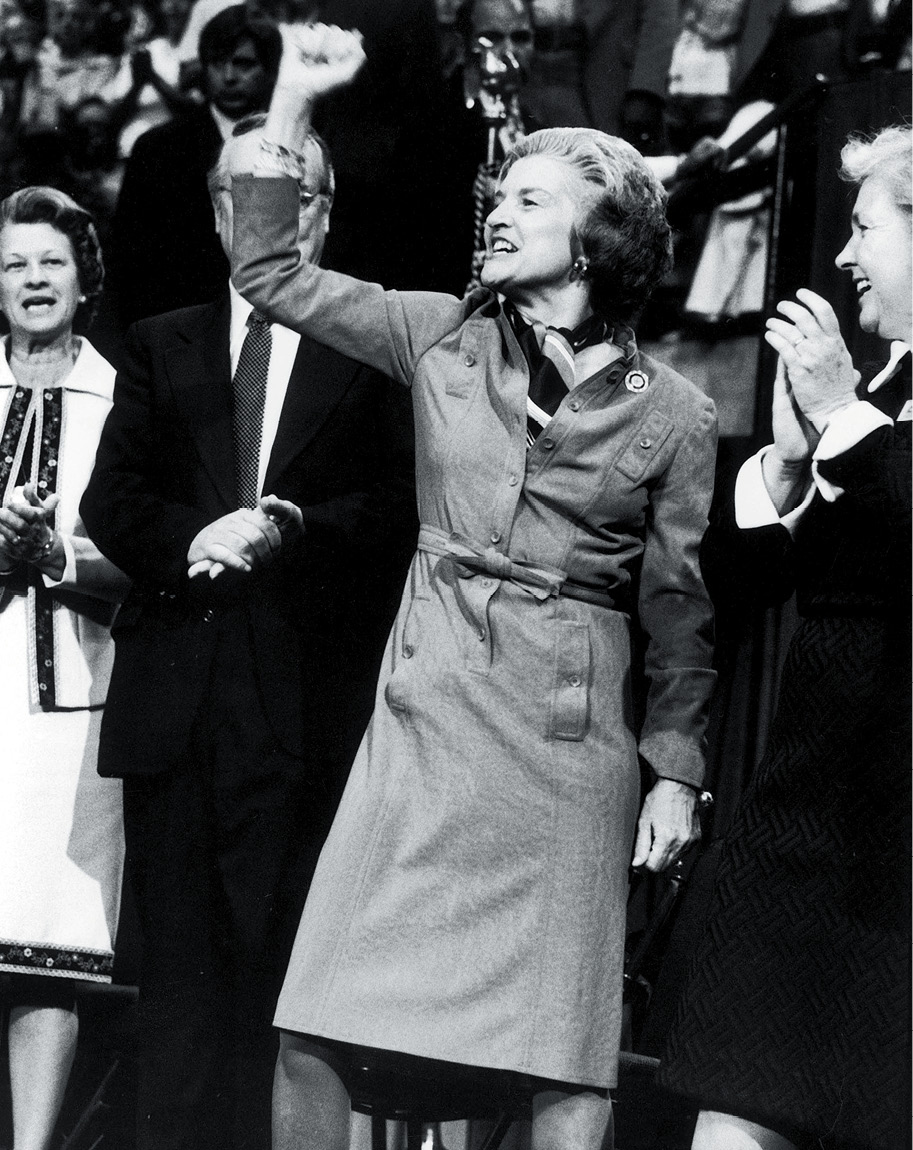Betty Ford

Hillary and Chelsea
Hillary
Betty Ford was not only an influential first lady in the last half of the twentieth century, she was also a transformational American. Aside from being gracious, humble, and welcoming, she was fierce. She advocated passionately for the Equal Rights Amendment, which would guarantee all Americans equal rights regardless of sex—and which still hasn’t passed. She never shied away from expressing her views. “I believe the Equal Rights Amendment is a necessity of life for all citizens,” she said. “The Cabinet sometimes felt that I shouldn’t be so outspoken.”
Chelsea
Betty was born in Chicago in 1918 and spent her childhood in Grand Rapids, Michigan. She took dance lessons from the time she was eight years old and, after graduating from high school, briefly pursued a dance career. As a student at Bennington College in Vermont, she studied with modern dancer and choreographer Martha Graham—someone who, Betty later said, shaped her life “more than anyone else.” After college, she moved to New York City to dance as part of Graham’s company. She then moved back to Grand Rapids where she worked in fashion and taught dance to children with disabilities. She married a childhood friend and cared for him as he struggled with alcoholism and poor health; after five years, they divorced. Betty later met and married a World War II veteran and lawyer named Gerald Ford.
“I do not believe that being First Lady should prevent me from expressing my ideas.… Why should my husband’s job or yours prevent us from being ourselves? Being ladylike does not require silence.”
—BETTY FORD
Hillary
I felt Betty’s influence throughout my life, especially her work around breast cancer. It was very personal to me; my mother’s best friend, who lived across the street from us in the 1960s, was diagnosed with breast cancer, and at the time no one talked about it. I knew my mother was over there every afternoon, but I had no idea what was wrong with her friend. It was only after she died that I learned what she had been going through. But then along came Betty Ford. She talked about her ordeal, even sharing a photo of herself in her hospital room after surgery in 1974. It was reassuring and invigorating to have an important person, let alone our first lady, be so open and honest and personal about her cancer. She explained that “maybe if I as First Lady could talk about it candidly and without embarrassment, many other people would be able to as well.” She also campaigned for early detection and screening, research, and better access to treatment, and blew away the stigma that had kept countless women from even getting examinations. We’ll never know how many lives she saved, both directly and indirectly, because of her courage in facing up to her own illness.
After she left the White House Betty was equally open about her successful battle against substance use disorders and addiction. I visited the Betty Ford Center with her years ago, and was stunned by the dignity with which patients were treated; there was no place for stigma at the Betty Ford Center. She could have just given her name to the facility and left it at that; but of course she didn’t. She knew the names of every staff member and every patient. (When I expressed my awe, she brushed it off, explaining that she only knew their first names. Still!) To me, Betty has always embodied grit and guts.
Chelsea
In addition to her campaign to destigmatize breast cancer and addiction, and expand treatment for both, Betty also championed the Equal Rights Amendment and gender pay equity. She was vocally pro-choice; while her husband suggested Roe v. Wade went too far, Betty publicly celebrated the landmark Supreme Court decision that legalized abortion. Time magazine named her the “Fighting First Lady” for her unapologetic political, social, and public health stances. That steeliness continued throughout her life. Her support for full equality under the Constitution and a woman’s right to make her own reproductive health decisions never wavered, even as the party her husband had led moved further away from them both.